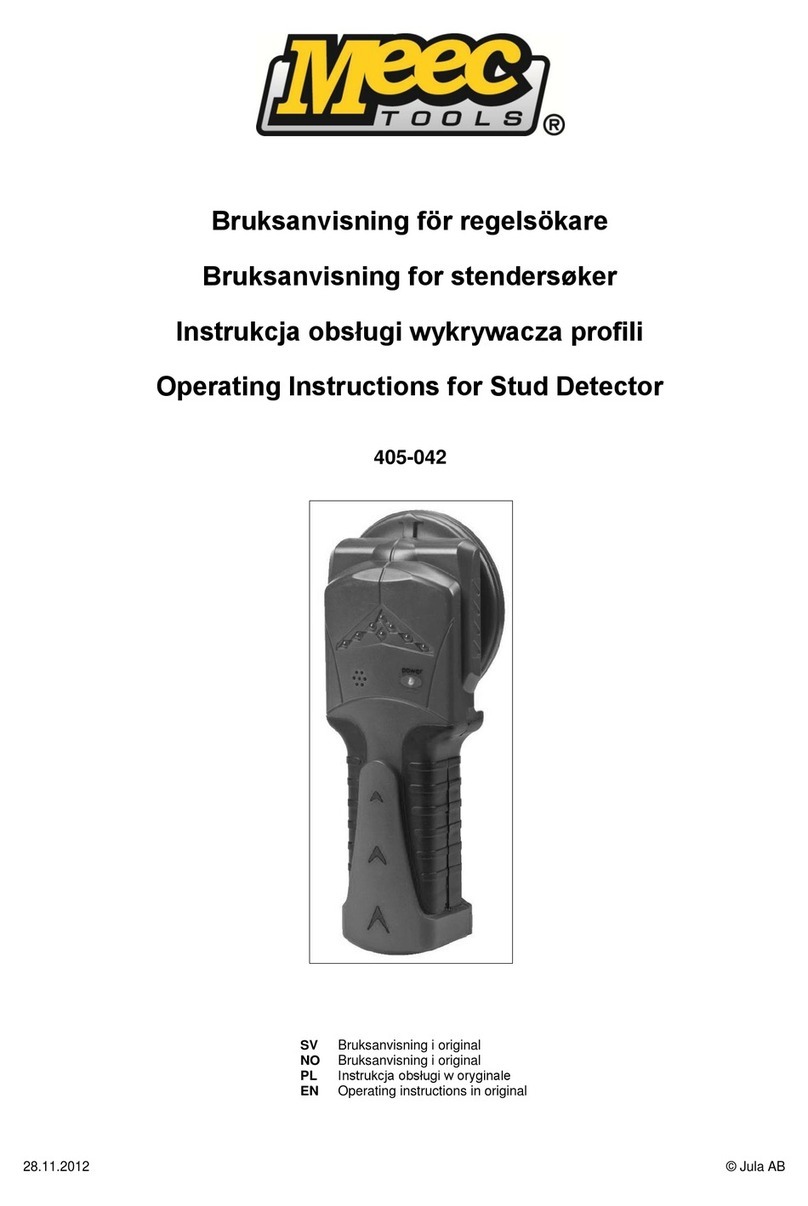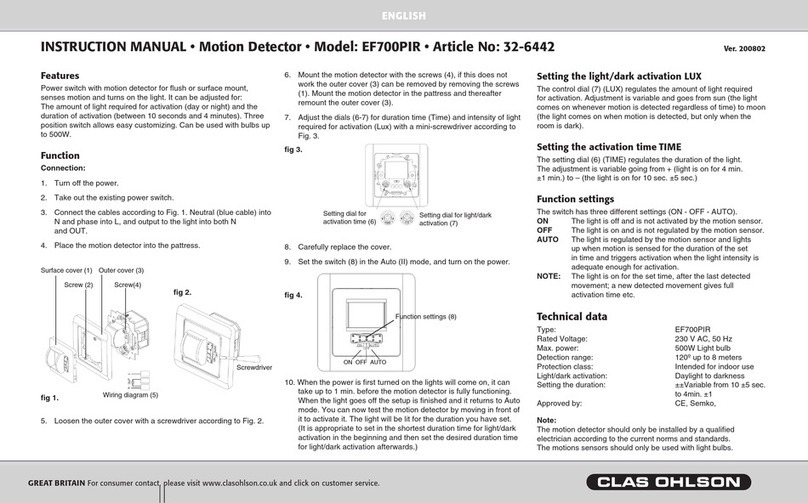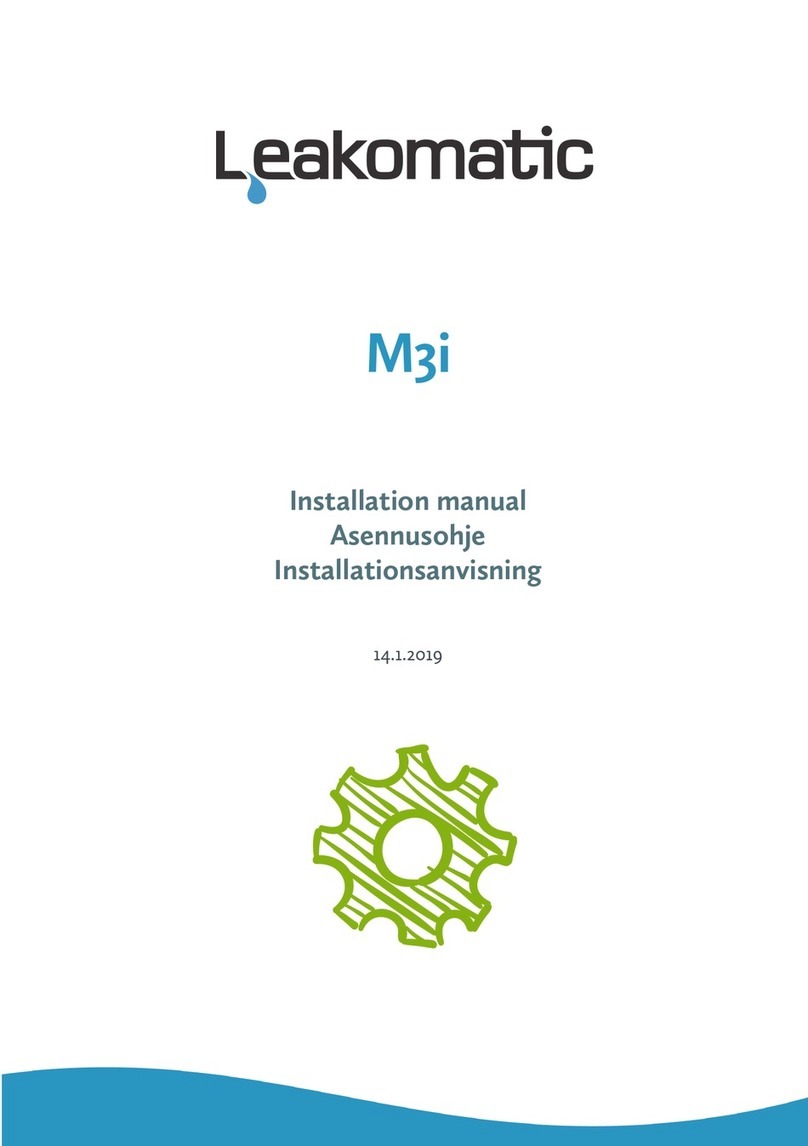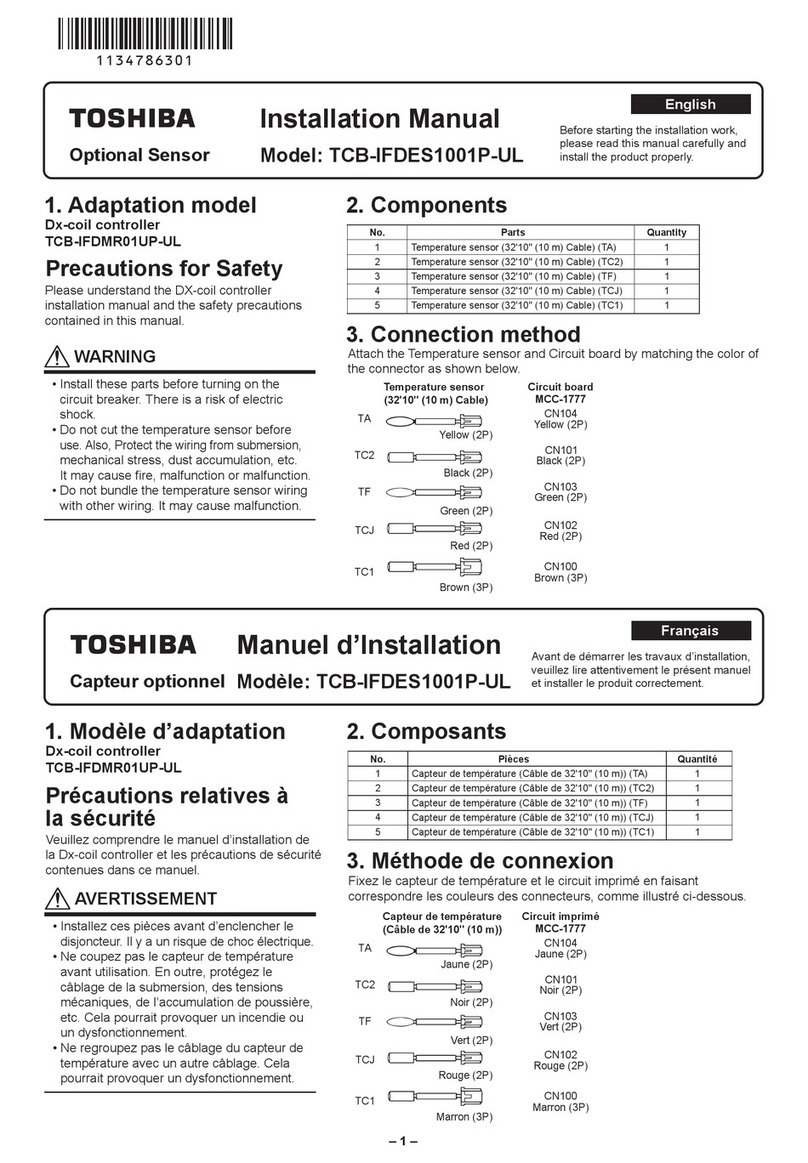BASHLIN Lineman's User manual

Important Safety
Information for Users of
Bashlin Lineman’s
Climbing Equipment
- WARNING -
For your personal safety, this booklet must be
completely read and all of the information under-
stood completely before using these products.
No. BLCE-405-A Rev. 11-11
119 WEST PINE ST., P. O. BOX 867, GROVE CITY, PA 16127-0867
(724) 458-8340 FAX (724) 458-8342 www.bashlin.com
BASHLIN INDUSTRIES INC.

Table of Contents
Important Safety Information ................................................... 3
General Information for Bashlin Climbing Equipment ..................... 3
Lineman’s Climbing Belts .......................................................... 4
Sizing ................................................................................................ 4
To determine Your “D” Size .............................................................. 4
Stock and Special Belts ................................................................... 4
Tips for Using Bashlin Tool Belts ..................................................... 5
Inspecting Your Bashlin Tool Belt..................................................... 6
Cleaning and Maintaining Your Bashlin Tool Belt ............................ 7
Lineman’s Climbing Harnesses ............................................... 7
Sizing Bashlin Lineman’s Climbing Harnesses ................................ 7
Styles of Bashlin Lineman’s Climbing Harnesses............................ 8
Tips for Using Bashlin Lineman’s Climbing Harnesses ................... 8
Inspecting Bashlin Lineman’s Climbing Harness............................. 9
Maintaining Bashlin Lineman’s Climbing Harness......................... 10
Styles of Bashlin Lineman’s Climbing Harness.............................. 10
Donning Bashlin Harnesses ........................................................... 10
Buckles on Bashlin Harnesses....................................................... 11
Proper Use of Bashlin’s Hook and Loop
Body Harness Chest Closure ......................................................... 12
Pole Straps and Adjustable Positioning Lanyards......... 12
Tips for Using Bashlin’s Pole Straps and Adjustable
Positioning Lanyards ...................................................................... 12

Inspecting Bashlin Pole Straps and Adjustable
Positioning Lanyards ...................................................................... 13
Maintaining Your Bashlin Pole Straps and Adjustable
Positioning Lanyard........................................................................ 14
Climbers ......................................................................................... 15
Sizing Your Bashlin Climbers.......................................................... 16
Climber Pads .................................................................................. 16
Strap Climber Pad Attachment ...................................................... 16
Hook-n-Loop Pad Attachment ....................................................... 17
Wearing Hook-Loop Pads .............................................................. 18
Tips for Using Bashlin Climbers ..................................................... 18
Inspecting Your Bashlin Climbers and Pads.................................. 19
Using the Bashlin Gaff Guage ........................................................ 21
Maintenance of Bashlin Climbers .................................................. 22
Sharpening the Gaffs on Your Bashlin Climbers............................ 22
Shaping the Gaffs on Your Bashlin Climbers ................................. 23
Before Returning Your Climbers to Service ................................... 23
Pole Cut Out Test............................................................................ 23
Replacing Bashlin Gaffs ................................................................. 24
Installing the New Bashlin Gaff ...................................................... 24
Replacing Bottom Straps on Bashlin Climbers ............................. 25
Installing 89N Bottom Straps ......................................................... 25
Installing 87N Bottom Straps ......................................................... 25
Inspection Record ...................................................................... 27

Se hable Espanol, (Para una versió espanola de este folleto de la
seguridad, contacta las Industrias de Bashlin S.a. por favor.)
Nous parlons Français (Pour une version française de ce livret
de sûreté, contacter les Industries de Bashlin Inc s’il vous plaît.)
Other languages upon request
This information is intended for the user of the products indicated. It must
be included with the product, read and understood by the user prior to
placing this product into service. This equipment is to be used by prop-
erly trained, professional workers. The information in this booklet, manu-
facturer’s demonstrations, sales seminars, catalog information or other
promotional materials may be a part of but does not constitute proper or
complete training in the use of these products.
The user must inspect this equipment before each use. Any equipment
found to be worn out, damaged, subject to shock loading or in any way
questionable, must immediately be removed from service or accident,
injury and even death could result. Specific guidelines for inspection are
included in this information booklet.
General Information for Bashlin Climbing Equipment
These products are fabricated from leather and synthetic woven materials
and rated metal hardware. They are assembled by riveting and/or sew-
ing. The thread used in assembly is of a contrasting color to permit easy
inspection.
These products are manufactured in accordance with OSHA,ANSI, ASTM
F887, and/or CSA standards and are labeled as such. Please contact us
for information regarding specific applicable standards for each product.
Important Safety Information
- WARNING -
Bashlin equipment must not be altered. Altering or modifying these
products voids all warranties, may affect performance, and could
cause accident, injury or death to the user.
- WARNING -
Lack of proper training or the incorrect use and/or abuse of these
products may cause accidents, injury or death.
- WARNING -
Shock loading is extremely damaging to climbing equipment. Any
belt, harness pole strap, APL or climber that has been shock loaded
must be removed from service.
3

Sizing
Proper sizing is one of the most important considerations in the purchase
of a lineman’s tool belt. An improperly sized belt is uncomfortable and
may cause an accident or injury.
Bashlin tool belts are measured by
the “D” size, which is the distance be-
tween the heels of the D-rings. On 4
D-Ring belts (GD, GXD, GXDMP, G4D,
GX4D, and GX4DMP) this is the lower
belt assembly.
All linemen’s tool belts must be or-
dered according to the “D” size.
To Determine Your “D” Size
1. Locate the point where the heel
of the “D” ring should rest. As the
photo illustrates, this is approxi-
mately 4” down from the top of the
hip bone.
2. Begin to measure from this point. Measure
around the buttocks to the same point on
the opposite side.
When a properly sized tool belt is worn, the
D-rings will point nearly straight ahead and
the tongue adjustment will be in the center holes as shown in photo 3.
For the Padded Rest-A-Back (ex. 88BP) or Hip-Grip (ex. 88GP) tool belts,
add 2” to your standard “D” measurement.
Stock and Special Belts
Bashlin stocks right handed belts, in sizes D-18 to D-28 of the most pop-
ular belts. Belt sizes may vary on different style belts. Larger belts, up to
D-32, may be ordered. There is an additional cost for sizes D-29 to D-32.
Belts and holsters with left hand design are available at no additional
cost. Add “LH” to the part number.
Lineman’s Climbing Belts
4
Sizing Range for Bashlin
2 D-Ring Tool Belts - Per ASTM F887
D Size Center Tool
In. Minimum Hole Maximum Loops
D18 32 36 40 3
D19 33 37 41 3
D20 34 38 42 3
D21 36 40 44 4
D22 37 41 45 4
D23 38 42 46 4
D24 40 44 48 4
D25 41 45 49 4
D26 42 46 50 4
D27 44 48 52 4
D28 45 49 53 4
Sizing Range for Back Support
and 4 D-Ring Tool Belts
D Size Upper Tongue
In. B-Series G-Series/4D
D18 29-36 33-39
D19 30-37 35-41
D20 31-38 35-41
D21 32-39 37-43
D22 33-40 37-43
D23 34-41 39-45
D24 35-42 39-45
D25 36-43 41-47
D26 37-44 41-47
D27 38-45 43-49
D28 39-46 45-51

Tips for Using Bashlin Tool Belts
• Neverclimborworkwhileengagingbothendsofyourpolestrap
into one “D-Ring” of your tool belt.
• Alwaysvisuallyverifythesnap-hooksorcarabinersareengagedand
the gates fully closed and locked before allowing the equipment to
support your weight. Don’t rely on the “click”…for more than a few
guys that was the last thing they heard before they heard the sound
of the ambulance.
• Neverstorebelts,harnessstraps,orpadsnearstoves,steamcoils,
radiators, truck exhaust, etc...this will dry and weaken the materials.
Store your belt in a clean, dry location.
• Neverconnectatwistedstraporlanyardtothe“D-Rings”
• Alwaysclimbwiththesnapkeepersfacingoutwardandthepole
strap flat, with no twists, against the pole with the buckle side out.
• When“free”climbingneverletgoofthepoleorstructurewhile
repositioning your strap or lanyard.
• Nevercarryanywire,tools,orotheraccessoriesonthe“D-Rings”of
your tool belt. Any foreign objects carried on the “D” could interfere
with the operation of the snap-hook, or carabiner, causing an ac-
cidental disengagement resulting in a fall.
• Neverattachyourhand-linedirectlytoyourtoolbelt.Useahand-
linecarriersuchastheNo.33.WhenMrs.Smithaccidentally
catches your hand-line on the bumper of her car, she won’t drag you
off the pole.
5
- WARNING -
Bashlin’s 80 Suspenders, 81 Gut Straps, and 83 Detachable
Rest-a-Back are designed only to carry the weight of the tools and
belt you are wearing. They are not tested for or designed to support
your body weight. Incorrect use, such as using these products in
combination with a tool belt to fashion a saddle and loosening the
tool belt is very dangerous. The components of the 80, 81 and 83
could break under these circumstances. The result will be your belt
sliding off of your hips and your falling to the ground.
- WARNING -
Bashlin tool belts must be worn tightly and on, but not below the
hips. Incorrectly wearing a tool belt may cause accident, injury or
death.

• Onlylineman’sholstersaretobeattachedtoandusedontheclimb-
ing belt. Attach it to the belt correctly with the screwdriver pocket
toward your back. This will keep the tools in your holster separated
from the “D-ring” and reduce the chance of accidentally hooking
your snap or carabiner into a tool.
• Neverpuncturethecushionsectionofthebelttohangtoolsonthe
belt.
6
- WARNING -
A Lineman’s tool belt, even one with 4 D-Rings is not a saddle and
must not be worn as one. The belt should be worn snugly with the
lower D’s on, not below the hips. The upper belts on the wide (B
and G) series belts as well as the upper straps on the 4 D-Ring belts
are not to be worn on the hips. Wearing the belt incorrectly may
cause you to be ejected from the belt, causing injury or death.
Inspecting Your Bashlin Tool Belt
This equipment should be inspected
before each use. Your tool belt must be
inspected for the following;
• Electricalburns,cracks,or
deformation of the “D-rings” or
buckles.
• Looserivetsorbroken
stitching on the hardware
attachment points, and other
primary strength members.
(A)
• Degradedortornnylon
strength members, as well as
other physical, chemical, heat
or age related damage.
• Brokenorloosetoolloops,snapsor
a worn holster attachment point. (B)
• Dryrottedleather.(C)
• Elongatedholesinthetongue.
- WARNING -
Any belt displaying evidence of any one of these conditions must
be removed from service. The average useful life of a tool belt is
5-8 years of normal usage.

7
Cleaning and Maintaining your Bashlin Tool Belt
Regularly cleaning your climbing belt will improve its appearance, make
it last longer, and keep your clothes cleaner. Dirt can get into the leather
and nylon fibers actually breaking them down. The cleaning process
will also help you to spot any worn components that could cause future
trouble.
These belts consist primarily of leather and nylon components. The
leather should be cleaned using a saddle soap, while the nylon is
cleaned better with mild soap and water. Avoid any petroleum based
cleaners that may damage nylon. After the dirt is removed, oil the leather
using a commercial leather preserver such as mink, Neatsfoot or bee
oil. The belt should be cleaned and leather oiled at least every 90 days,
more if the work conditions require it. After cleaning and oiling the belt,
let it dry overnight. Take a moment to wipe off the excess oil from the
leather, as it will stain your clothing and attract dirt. If the leather is
kept moist, it will last a long time. However, once the leather begins to
dry, no amount of oil will repair the damage. Preserve you belt and your
investment by regularly maintaining your belt.
Lineman’s Climbing Harnesses
Bashlin’s Lineman’s Climbing Harnesses merge a line belt with a full
body harness. They provide an extra level of comfort and security when
working on a pole, especially when using wood pole fall restricting
devices(WPFRD).TheseproductsmeettherequirementsoftheASTM
F887 for electric arc performance.
Sizing Bashlin Lineman’s
Climbing Harness
Proper sizing is essential for comfort
and performance in the event of a
fall. An improperly sized harness just
doesn’t feel good. In the event of an
incident requiring the equipment to
arrest a workers fall, the individual could fall out of an
improperly sized harness. To size the belt portion of the
harness, see page 4 of this booklet.
The Bashlin harnesses are sized in accordance with
the torso of the worker. For the wearer, this involves
measuring their height and chest size to determine the harness size
based on those measurements. For most individuals, their overall height
will determine the correct size. However, if the chest measurement is too
large for the corresponding height, move to the larger size. If the chest
See our catalog or www.bashlin.com for leather care and cleaning products.

Need more information? Contact our customer service and
ask about our video “Donning Bashlin Harnesses”.
8
size is too small for the height, use the individual’s height to determine
the size. For 99% of the individuals, this method will determine the
proper size. For the other 1% of you, kindly contact us.
Sizing Bashlin Lineman’s Climbing Harnesses
H Style Harnesses-662R and 662A
Size Height Chest
O One Size Fits Most 5’ 4” - 6’ 3” 34 in. - 48 in.
X X-Large 6’ 3” - 6” 6” 48 in. - 54 in.
2X Double X-Large 6’ 6” - 6’ 10” 54 in. - 60 in.
X-Style 683 Saddle Style 647/649 H-Style 662V
Size Height Chest
S Small 5’ 4” - 5’ 7” 34 in. - 36 in.
M Medium 5’ 8” - 5’ 11” 36 in. - 40 in.
L Large 6’ 0” - 6’ 3” 40 in. - 44 in.
X X-Large 6’ 3” - 6’ 6” 44 in. - 48 in.
2XL XX-Large 6’ 6” + 48 in. - 52 in.
3XL XXX-Large 6’ 6” + 52 in. - 56 in.
After determining the proper harness size, find the tool belt size by
using the directions on page 4 of this booklet.
Tips for Using Bashlin Lineman’s Climbing Harnesses
• Wearyourharnessassnuglyor,ifyouprefer,astightaspossible.
This will reduce strap slippage and help keep you in the harness in
the event of an arrested fall.
• Donotuseanimproperlysizedharness.
• Onlyuseaharnessmadefortheworkbeing
performed.
• Keepthebackattachmentpointpositioned
between the shoulder blades. This will allow
peak performance of the harness should it be
used to arrest a fall. It will also help keep the
straps on the shoulders during day to day use.
• Avoidexposingtheharnesstoexcessiveheat,
chemicals and prolonged sunlight that degrade
the material.

9
• Storetheharnessinaventilatedarea,andcleanitwithsoapand
waterregularly.Wesuggestacanvasornylonbagforstorageand
to carry as well as to protect the harness at the work-site.
• Don’tviolatesafetyrules.
Inspecting Bashlin Lineman’s Climbing Harness
The user must inspect the harness prior to each use. In addition, a
competent person, as defined by the ANSI Z359, other than the user must
inspect the equipment annually. This inspection must be documented,
and a record of the inspection kept as long as the equipment is in service.
Werecommendthattheequipmentbetaggedwithaserialnumber,and
the same number noted on the enclosed inspection record (page 27).
These products must be inspected for the following;
• Hardware-Lookforcracks,deformation,electrical
burns and secure attachment points. Inspect
the snap hooks for easy and smooth operation,
and gates that close completely. If using a quick
release buckle, make sure it won’t open if only 1
tab is depressed.
• Nylonorpolyesterstrengthmembers-burns,
cuts, chemical or ultraviolet degradation,
worn fibers, abrasion.
• Splices-Broken or cut stitches, fraying,
burns or worn fibers.
• Rivets-Loose,bentorcorrodedrivets
• Evidence of shock loading - including deployed
tags on shock absorbers, broken stitches,
elongated grommets, bent hardware, or even
witnessing an incident that doesn’t appear to affect
the equipment.
• Inspectthetoolbeltpertheinformationfoundon
page 6 of this booklet.
- WARNING -
Any equipment with evidence of any one
of these conditions must be removed from
service immediately.
The average useful life of harnesses products
is 1-4 years, from the date of manufacture
depending on work conditions, care and
usage.
See the inspection record on the back cover
of this booklet.

10
Maintaining Bashlin Lineman’s Climbing Harness
Clean the tool belt per page 7 of this book. Your harness should be cleaned
as needed to remove dirt that will break down nylon fibers and to remove
sweat and other chemicals that may degrade the webbing. Cleaning is
best done by hand washing with mild laundry
soap and water, rinsing the soap out completely,
and hang drying. If the tool belt can be removed
from the harness it may be machine washed on
the gentle cycle by placing it in a nylon mesh
bag. Do not machine dry these products.
The equipment is best stored in a ventilated
canvas or nylon bag. It will be protected from
mechanical and chemical damage as well as the
sunlight that will severely degrade webbings.
The ventilation is needed to reduce the chance
of mold and mildew, especially in humid cli-
mates. Do not store next to excessive heat.
Styles of Bashlin Lineman’s Climbing Harnesses
Bashlin offers several different styles of Lineman’s climbing harnesses.
They offer unique methods of connecting the harness and belt together,
to accommodate different climbing styles. For specific information
regarding your harness, please see the data sheet included with your
product. If none is included with your harness, contact customer
service.
Donning Bashlin Harnesses
• Grasptheharnessbytheback
attachment point, remove all twists
from the material and open the chest
closure, or as on the 683 style one side
of the chest assembly. (1)
• Placetheharnessontheshouldersand
fasten the chest closure. (2)
• Bucklethelegstraps.
• Adjusttheshoulderstrapssotheseat
strap is snugly underneath the buttocks.
• Thebackattachmentmustbesquarelybetween
the shoulder blades. (3)
• Tightentheleg,chestandshoulderstraps.
• Ifyourharnesshas2piecebuckles,replacethe
1
2
3

11
plastic keepers an inch or so away from the
buckles. This is done by placing the keeper
under the strap, pinching the webbing and
sliding the material into the slots of the
keeper. This will greatly reduce any slippage
of the 2-piece buckle. Then simply slide the
remaining material into the elastic keepers.
Withgrommetstylebuckles,simplyplace
any excess webbing under the elastic keepers. (4)
• Makeanalcheckofallbucklesandstrapsbeforebeginningthe
work.
• Securethetoolbeltinthenormalmanner.Thebeltmustbeworn
correctly, per the instructions in this booklet. See pages 4-5.
Buckles on Bashlin Harnesses
• Interlocking Pass-Thru Buckles – Connect these buckles by
sliding the smaller adjuster through the slot on the frame attached
to the harness. (1) Note it will slide
through much easier if the printing
on the top of the adjuster is turned
toward the attachment point of the
frame. (2) Be certain the free end of
the strapping is captured by the frame. After the buckle is secured
and the strap adjusted, tuck the webbing into the keeper to restrict
the strap movement. (3)
• Grommet Tongue Buckles – Slide the end of
the billet through the buckle frames and adjust
the strap to the correct length. Place the
tongue of the buckle frame through the billet
grommet that will make the strap the correct
length, (4) then secure the end of the billet in the keeper. (5)
• Quick Release Buckles – Connect the buckles by sliding the male
end in the female section until both of the tabs
“click” and the buckle is locked. (6-7) The buckle
is released by depressing both tabs until the
male end can be removed. (8) Both tabs must
be moved to release the buckle. If it releases
when only one tab is moved, the harness should
be removed from service. Adjust the strap after
the buckle is connected, then tuck the excess
webbing into the strap keeper to maintain the
adjustment.
1
4
2 3
4 5
6
7
8

12
Proper Use of Bashlin’s Hook and Loop Body Harness
Chest Closure
• Adjustcheststraptotheproperverticalpositionontheshoulder
straps. It should cross at the mid-point of a chest pocket.
• Wrapthestrapunderandovertherightshoulderstrap.Firmlypress
the hook and loop material together across the length of the strap.
• Tuckthefreeendofthestrapbehindtheleftshoulderstrap.
Pole Straps and Adjustable
Positioning Lanyards (APL)
Bashlin’s Pole Straps and Adjustable Positioning Lanyards (APL) are
made from woven nylon, 6 ply nylon, nylon reinforced leather or braided
rope with a red center. These straps are designed to be used with the
climbing belt as a positioning strap. They are not lanyards for fall arrest,
nor are they to be used for pulling the line truck out of a ditch.
Bashlin pole straps and adjustable positioning lanyards use double
action locking snaps, or carabiners.
Tips for Using Bashlin’s Pole Straps and Adjustable
Positioning Lanyards
• Never climb or work while engaging both ends of your pole strap
into one “D-Ring” of your tool belt.
• Alwaysvisuallyverifythesnap-hooksorcarabinerareengagedand
- WARNING -
For the chest strap closure of the harness to be secure, at least 2”
of the strap must extend beyond the inside edge of the left shoul-
der strap. The hook and loop must be secure at all times during
use. Keep the material free from foreign matter that could keep
the hook and loop sections from securely mating. If there are any
indications of wear, remove the harness from service.

13
the gates fully closed and locked before allowing the equipment to
support your weight. Don’t rely on the “click”…for more than a few
guys that was the last thing they heard before they heard the sound
of the ambulance.
• Neverstorebelts,straps,orpadsnearstoves,steamcoils,
radiators, truck exhaust, etc...this will dry and weaken the leather.
Store in a clean, dry location.
• Neverconnectatwistedstraporlanyardtothe“D-Rings”
• Alwaysclimbwiththesnapkeepersfacingoutwardandthepole
strap flat, with no twists, against the pole with the buckle side out.
• When“free”climbingneverletgoofthepoleorstructurewhile
repositioning your strap.
• DisablingthelockingdevicesontheAPLorPoleStrapHooksisnot
very intelligent and can be dangerous. The locking snap-hooks and
carabiners are not sized in proportion to the “D-ring”. If the lock is
disabled, they will be prone to accidental disengagement or roll-out.
• Theleatherkeeperonthepolestrapisanintegralpartofthestrap
as designated by the ASTM F887 standard. Removing this piece
of leather not only makes the strap not compliant (Important at the
Lineman’s Rodeo or in case of an accident), it also makes it harder
for you to maintain control of the length of your strap.
Inspecting Bashlin Pole Straps and Adjustable
Positioning Lanyards
These straps and lanyards must be inspected prior to each use. They
should be inspected for the following;
• Electricalburns,cracks,or
deformation of the snap-hooks,
buckle or adjustable carabiner.
• Looserivetsorbrokenstitchingon
the hardware attachment points, sewn
splices or compression fittings, and
other primary strength members.
• Degradedortornnylonstrength
members, as well as other physical,
chemical, heat or age related damage.
• Dryrottedleather.
• Exposedredwearindicator (A) (A1)
• Elongatedholes,orbrokenstitches
on the strap material or rope.

14
• Improperlyfunctioningordamaged
snap hooks or carabiners including;
- A sticking gate or locking
mechanism (B)
- Gages that don’t close completely
- A malfunctioning locking
mechanism
- Weakormissingsprings
• ForAdjustable Positioning Lanyard
(APL), inspect the friction adjuster
for freedom of movement. There
must be no debris in the unit. Inspect
cables and set screws for condition
and proper engagement. (A) The nut
on the through bolt must be secure.
(B) Do not oil the mechanical adjustors as they will accumulate dust
and dirt, which could cause them to stick.
Maintaining your Bashlin Pole Strap and/or Adjustable
Positioning Lanyard
Regularly cleaning your strap or lanyard will make it last longer. Dirt will
get into the leather and nylon fibers actually breaking them down. Dirt
and debris will also diminish the performance of the friction adjuster.
The cleaning process will also help you to spot any worn components
that could cause future trouble.
These products consist of leather and synthetic components. The
leather should be cleaned using a saddle soap, while the nylon is
cleaned better with mild soap and water. Avoid any petroleum based
cleaners that may damage nylon. Hang the nylon strap or lanyard to dry
overnight. For leather straps, after the dirt is removed, oil the leather
using a commercial leather preserver such as mink, Neatsfoot or bee
oil. The leather strap should be cleaned every 90 days, more if the
work conditions require it. After cleaning and oiling, let it dry overnight.
Then take a moment to wipe off the excess oil from the leather, as the
B
A
- WARNING -
Any pole strap or lanyard displaying evidence of any one of these
conditions must be removed from service. The average useful life of
Bashlin straps and lanyards is 1-4 years of normal usage.

15
excess will attract dirt. If the leather is kept moist, it will last a long time.
However, once the leather begins to dry, no amount of oil will repair
the damage. Preserve your strap and your investment by regularly
maintaining your strap.
For information regarding Wood Pole Fall Restricting products,
see the information included with the product.
See our catalog or www.bashlin.com for leather care and cleaning products.
Climbers
Your Bashlin climbers are known the world over for their comfort and
superiorperformance.WhetheryourchoiceisthepopularBD14,
or one of the rugged steel climbers, BD12 or BD16, you have the
proven Bashlin 17° angle gaff, roomy
comfortable stirrup and innovative
offset design.
All Bashlin pole climbers come with
the following items standard; (A)
- 1 pair of shanks with the bottom
nylon straps installed
- 1 pair of gaff guards
- 1 pair of top slides with 4 screws
in a small packet
- 1 gaff gauge (Pole Climbers Only)
If any of these listed items are
not in your box, please contact us
immediately.
In addition, these climbers are sold
as sets and include the
following items designated
by part number
- Climbers with bottom
straps (ex. BD14-1N)
- Add 85 N top straps
(ex. BD14-2N) (A)
- Add 110D climber pad
(ex. BD14-3N)
- Replace 110D climber pad with 130D (ex. BD14-4N) (B)
- Replace 130D with 140DS climber pad (ex. BD14-5N) (C)
A
B
C

16
Sizing Your Bashlin Climbers
For maximum comfort and performance,
the climber shank must be adjusted to
fit your leg. This is done by performing
the following steps;
• Placetheadjustabletopslideonthe
shank.
• Putyourfootinthestirrupand
move the top of the adjuster to a
point two fingers below the bottom
of the knee bone. (D)
• Holdingthetopslideinplace,install
one of the screws, recheck the
position, then install the second
screw.
• Adjustthesecondshanktothesamesize.
- The shank should be low enough to keep the pad from rubbing
your knee bone. If you are experiencing excessive rubbing on the
knee bone, lower the top slide.
- The standard adjustment for Bashlin climbers per ASTM F887 is
14 3/4 to 18 inches. If by adjusting your climbers to the proper
height, the top slide is in the last hole, or if the climbers are simply
too short, you must use the longer top slides, number 14ATS, for
aluminum climbers or 16ATS for steel. Using the longer adjusters
gives you a better fit and reduces the flexing of the shank section
of the climber, especially in the critical section 4-8 inches above
the gaff.(See Climber Inspection).
Climber Pads
Bashlin climber pads reduce the shin
discomfort caused by standing on
climbers for extended periods of time.
Strap Climber Pad Attachment
(110, 130, 140, 145 or 150 series
pads)
Strap pads are held on your Bashlin
climbers with a 1 inch nylon strap that
has a tongue buckle closure. The strap
is normally oriented with the buckle
close to the front of the pad. The pad
should wrap around the front of your
leg and inside of the shank.

B
17
A
Hook-n-Loop Pad Attachment
(145-V or 150V series pads)
• Withthetopslidesecuredtotheclimber,inserttheshankintothe
tunnel of the pad until the top slide loop is seated in the tunnel slot
or steel insert. Squeezing the tunnel will allow the climber to slide in
easier. (A)
• (B, C) Feed the climber pad retaining strap through the top slide
loop and/or the steel insert and pull tight to secure the shank to the
pad. To assist in sliding the strap through the loop, place a piece of
paper or other thin material over the end of the strap while sliding
through the top slide loop. A pair of pliers can be used to pull the
strap.
C

18
Wearing Hook-Loop Pads
• Stepintotheclimberand
attach the bottom strap
securely to your boot. (A)
• Feedthefreeendofthepad
with the hook through the
steel loop. (B)
• Pullthroughuntilthepadis
snug on your leg. (C)
• Securethefreeend
around the pad, mating
the hook to the loop on
the body of the pad.
• Checkthesecurityof
the climber and pad
by taking a step or two
on the structure you
are climbing before
ascending in them.
Tips for Using Bashlin Climbers
• OnlyuseaBashlinGaffGaugeonBashlinPole
Climbers.
• Removefromserviceanyclimbersthathave
come in contact with an electric arc.
• Neveretchorscratchthecriticalsectionof
the climber shank, 4-8 inches above the gaff.
Points of stress will be created, and flexing
of the shank will cause a fracture and finally
premature failure of the climber shank. (F)
• Forgedaluminumalloyclimbersare30%
lighter than steel, yet compare quite
favorably with the strength of shanks made
A, B
C
- WARNING -
BECERTAINYOUHAVEPULLEDTHEMINIMUMWRAPWARNING
LABEL THROUGH THE STEEL LOOP. This will ensure that you have
at least the minimum amount of hook/loop interface to properly
secure the pad/climber to your leg. Failure to achieve this minimum
wrap may result in release causing SERIOUS INJURY OR DEATH (D)
D
F

19
of either steel or titanium. Aluminum yields a better performing
climber than steel or titanium. However, the aluminum is softer than
either material, will wear faster, and requires regular inspection and
maintenance.
• Donotusealuminumalloyclimberswithclimbingbootsthathavea
steel heel guard. The heel guard wears deeply into the stirrup of the
climber and will require premature replacement of the shanks.
• Bashlinrequiresthatanyothermanufacturer’sequipmentused
with our products be made in accordance with the ASTM F887
Standards.
• Don’tviolatesafetyrules.
• Keepdirtanddebrisclearedfromthehookandloopmaterialwith
a soft brush. Debris can compromise the performance of the hook
and loop material, even causing the strap to release.
Inspecting your Bashlin Climbers and Pads
Your climbers must be inspected prior to each use. Your climbers should
be removed from service until repaired or replaced if you find any of the
following:
• Climber straps that
are worn, cut, burned,
have elongated holes,
or loose buckles.
• Worn climber pads
that have broken rivets
or loops. (A)
• Hook-n-Loop pads
sleeve retaining strap is
damaged or missing.
Hook and loop on pad
will not stay secured, or
broken stitches. Steel
- CAUTION -
The average useful life of Bashlin Climbing Equipment based on
normal usage:
Tool Belts 5 - 8 years
Climbers 2nd set of gaffs
Pole Straps 1 - 4 years
A
Table of contents
Popular Security Sensor manuals by other brands
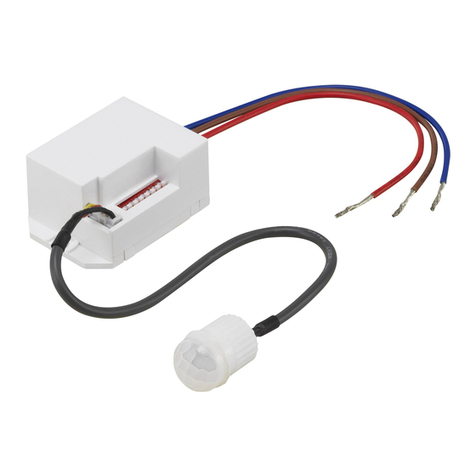
Renkforce
Renkforce 1362990 operating instructions

MRC
MRC FC-2601 Operation manual
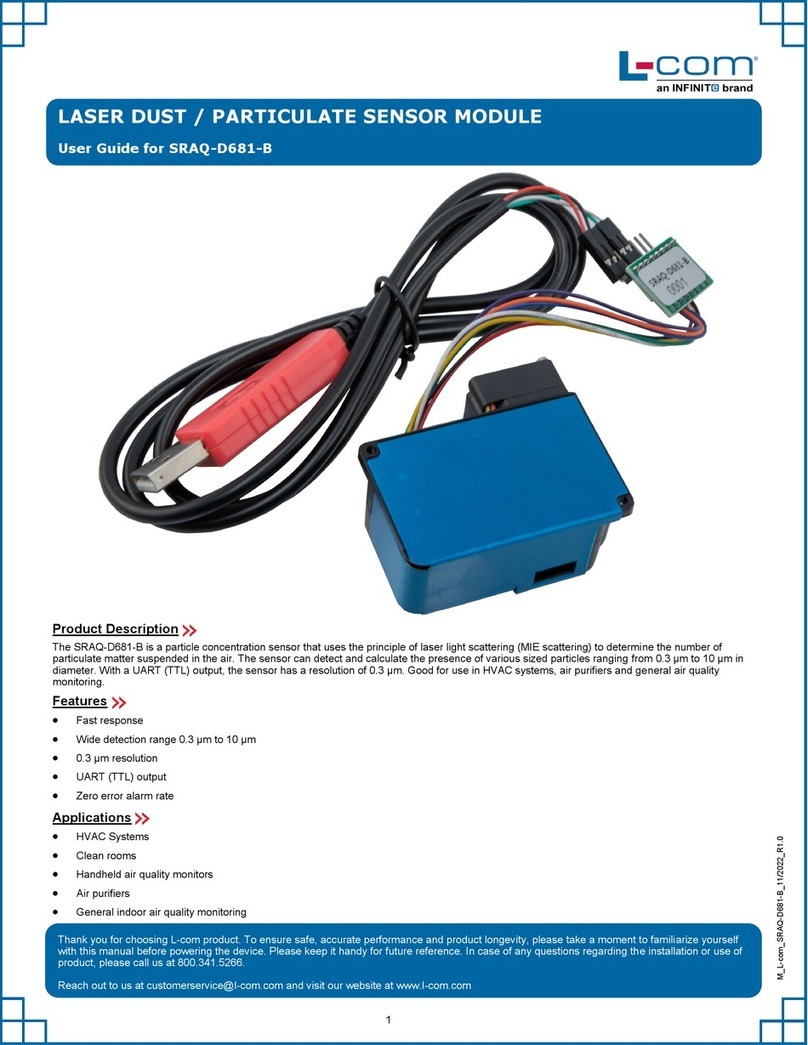
Infinite
Infinite L-com SRAQ-D681-B user guide
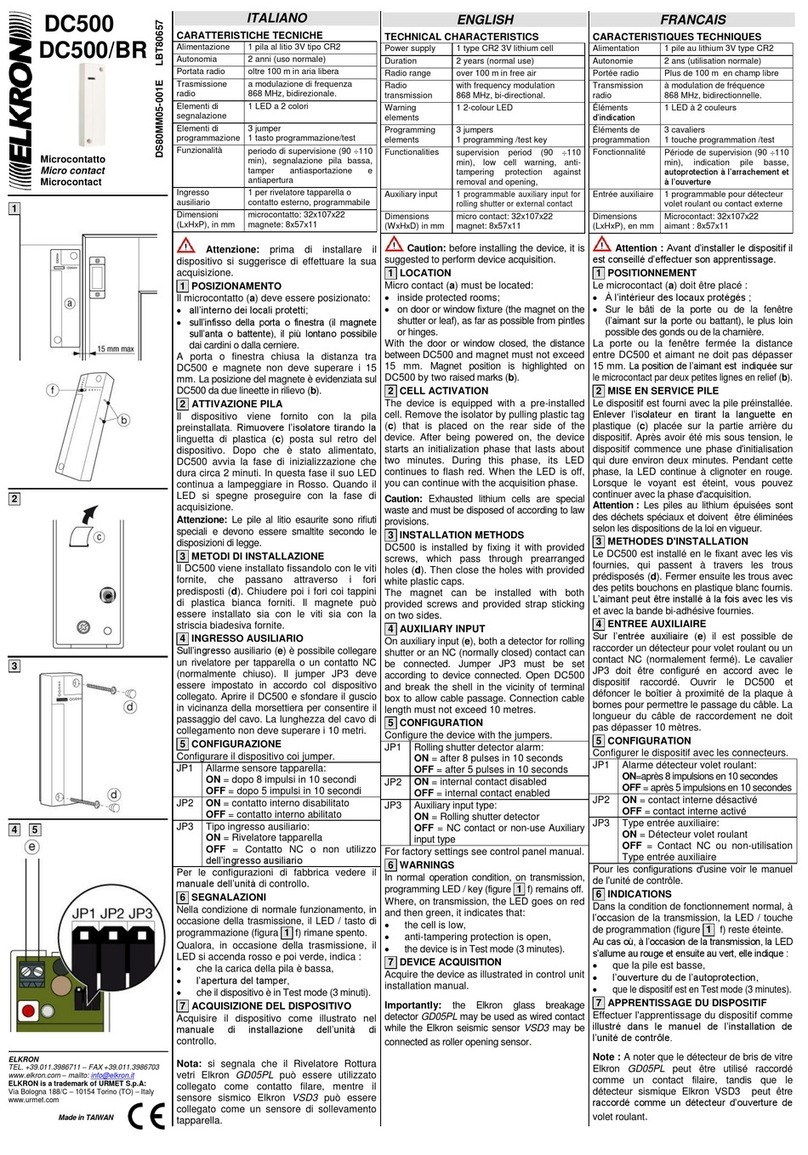
Elkron
Elkron DC500 quick start guide
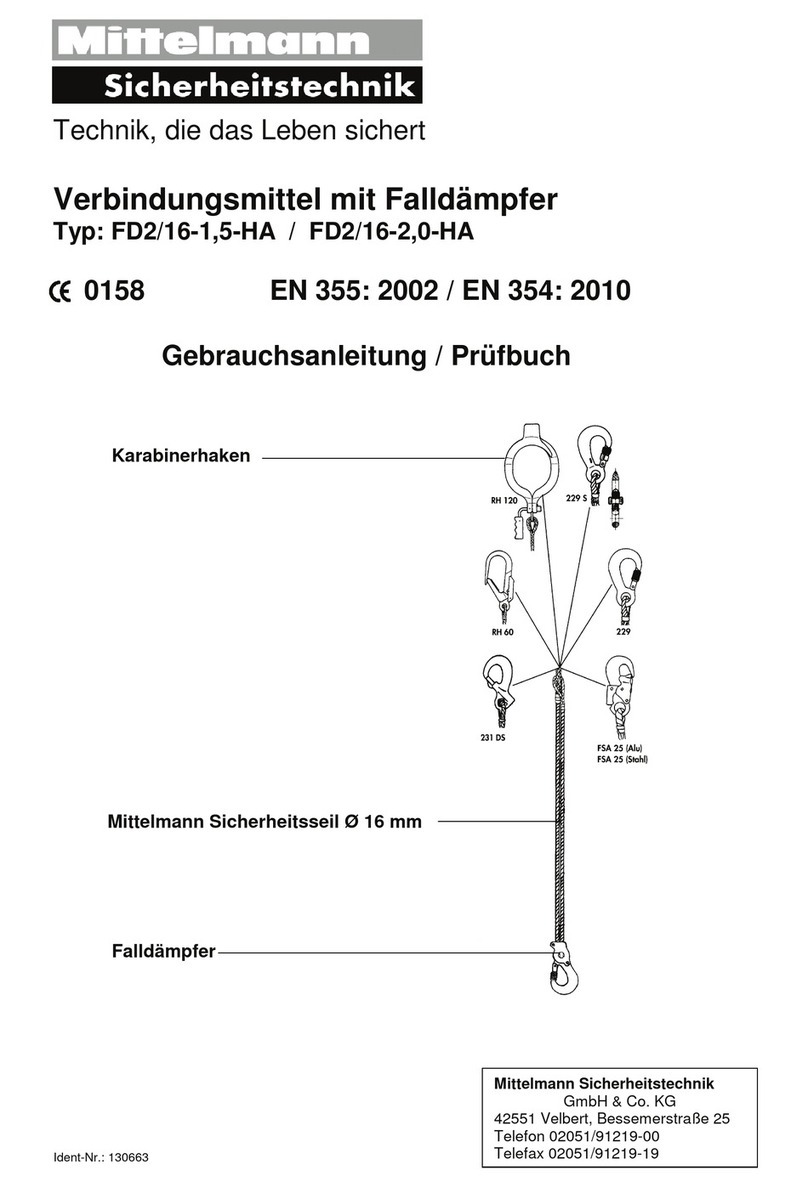
Mittelmann
Mittelmann FD2/16-1,5-HA use instructions

Critical Environment Technologies
Critical Environment Technologies CGAS-A installation manual
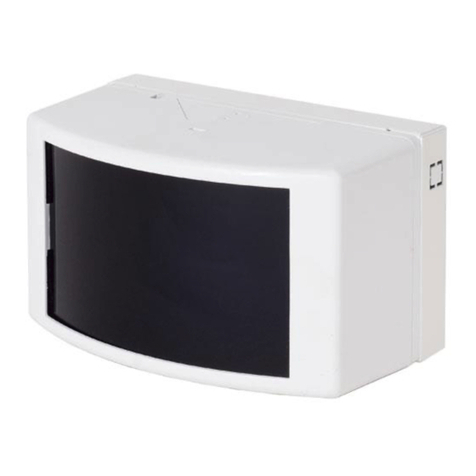
Telefire
Telefire TBD-8100 Technical manual
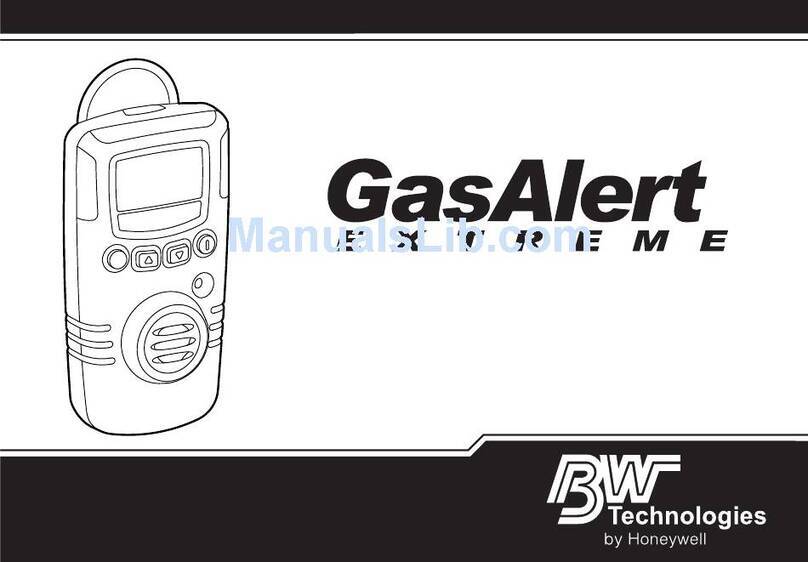
BW Technologies
BW Technologies GasAlert Extreme Quick reference guide
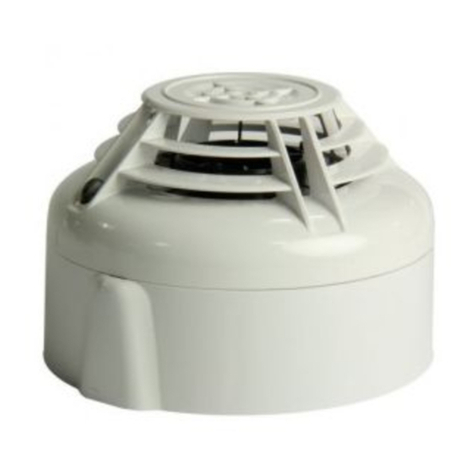
Honeywell
Honeywell Notifier NRX-TFIX58 Installation and maintenance instructions

Conrad
Conrad FAZ 3000-TF-2 operating instructions
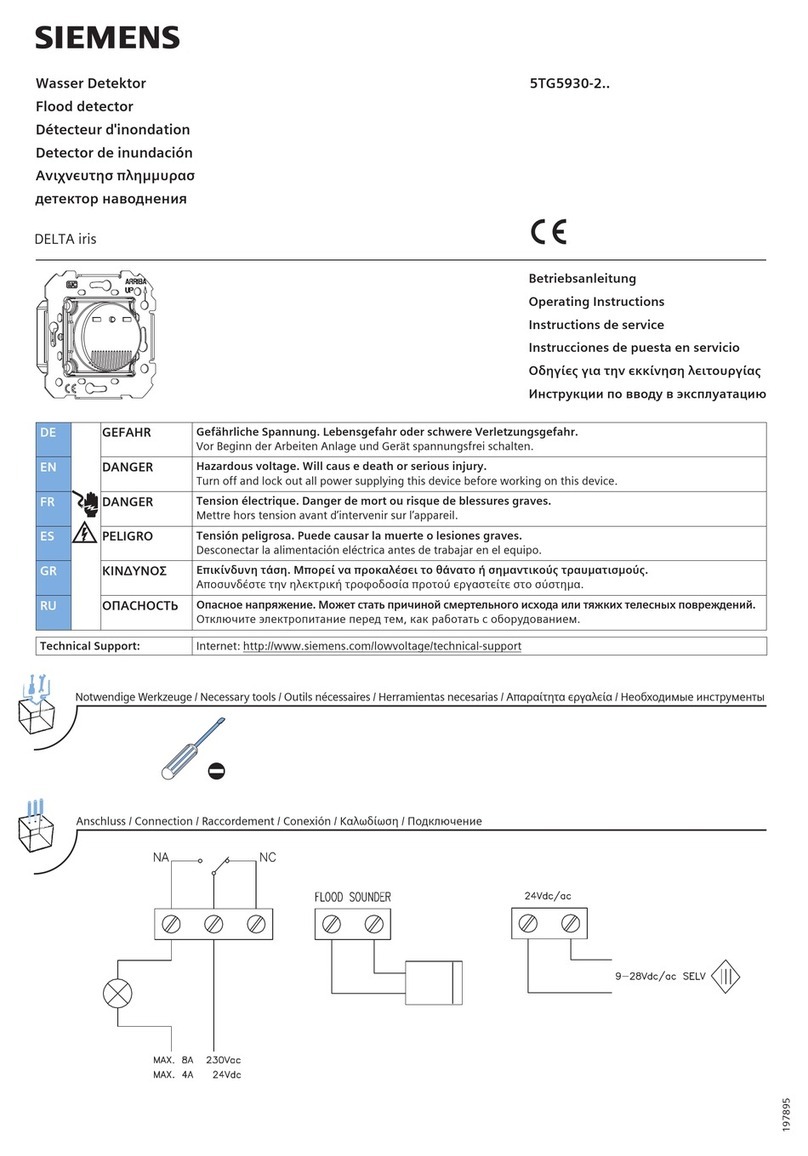
Siemens
Siemens DELTA iris 5TG5930-2 Series operating instructions
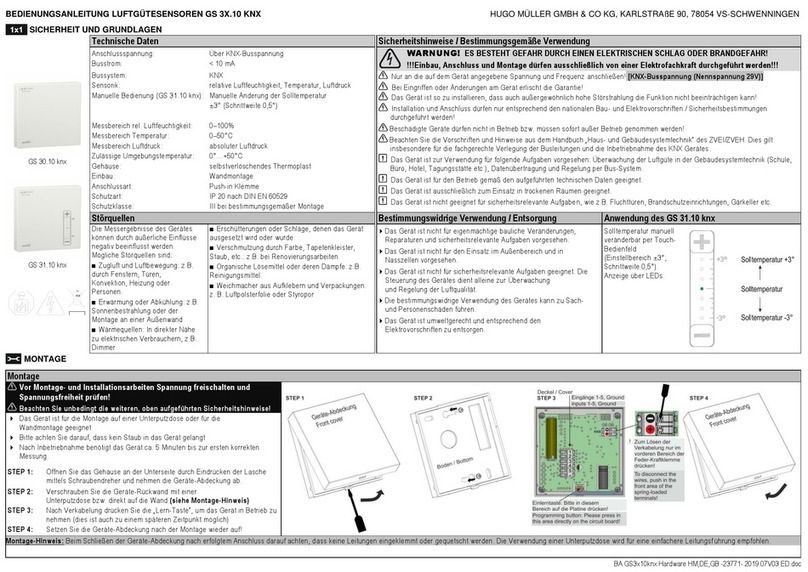
Hugo Müller
Hugo Müller GS 30.10 knx instruction manual

